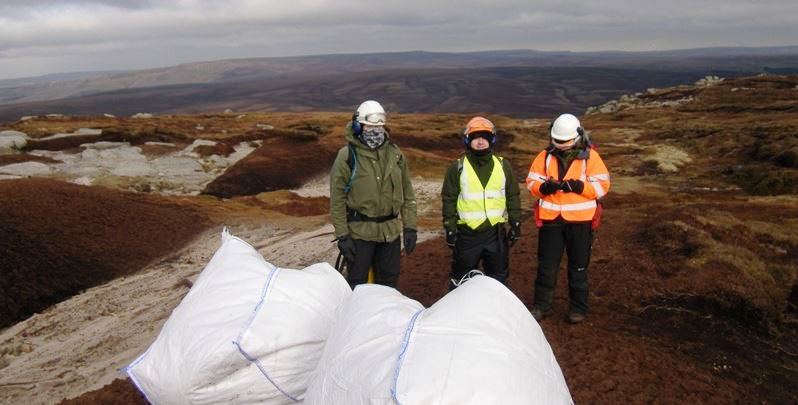An innovative £1.2 million project led by the The University of Manchester in Manchester, England aims to demonstrate that landscape restoration could be a low-cost way to reduce the risk of flash flooding in rural communities near steep upland streams and rivers.
“Our previous work has suggested that moorland restoration has the potential to reduce flood peaks downstream. This funding from NERC will allow us to investigate how these approaches may offer useful flood risk protection to communities living in the headwaters of our rivers,” said Professor Martin Evans, Project Lead at The University of Manchester.
Researchers from the university’s Geography department are working with project partners Moors for the Future Partnership, and colleagues at University of Leeds, Durham University and Greater Manchester, Merseyside and Cheshire Environment Agency to understand how natural flood management methods might help to protect 22 at-risk communities in the Peak District, along the western fringe of the Pennines.
Vulnerable rural communities are often small and spread out, and rarely justify expensive traditional flood defences. Previous investigations carried out by the researchers have shown that upland restoration can have a substantial impact on the flow of water during storms.
Reintroducing vegetation to bare soils and damming up erosional channels increases the roughness of the land’s surface and slows the flow of water entering streams – this delays the release of water from the uplands and reduces peak stream flow during storms, alleviating the chance of flooding downstream.
The project aims to improve our understanding of how to dam up erosional channels (gullies), assess the impact of restoring Sphagnum moss cover on moorlands, and determine how newly-planted upland woodlands affect storm flow. It will also assess the longer-term evolution of woodland and gully blocking approaches – this is important, as investment in natural flood management requires confidence in the long-term impact of restoration and maintenance of the interventions.
It will develop user-friendly computer simulations to assess possible interventions, and will work with partners (Environment Agency, Natural Resources Wales, Scottish Environmental Protection Agency, International Union the Conservation for Nature) to investigate how the project’s findings can be applied to elsewhere in the UK.
The project is one of only three to be granted funding by NERC (National Environmental Research Council), as part of their Understanding the Effectiveness of Natural Flood Management programme.
“We are delighted that the University of Manchester has been awarded this funding, which is a reflection of the confidence placed in our collaborative work,” said Mike Pilkington, Senior Research and Monitoring Officer at Moors for the Future Partnership. “This work builds on our flagship Making Space for Water project (currently funded by the EU Life programme), providing evidence that our conservation work on blanket bogs offers substantial protection from flooding.”
All photos courtesy of Moors for the Future Partnership.



